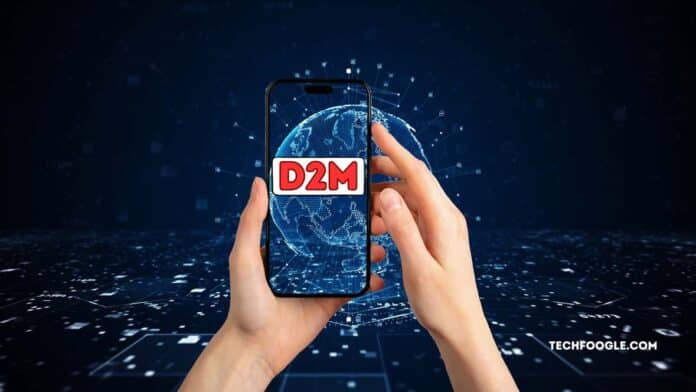D2M Technology Decoded: Imagine being engrossed in your favorite TV show on your smartphone when, suddenly, your internet connection drops, leaving you stranded in the middle of a cliffhanger. We’ve all experienced such frustrations more than once, but these annoyances may soon become a thing of the past. The Ministry of Information and Broadcasting is gearing up to commence testing of D2M (Direct-to-Mobile) technology in India very soon. But what exactly is D2M technology? In simple terms, it’s a revolutionary technology that allows users like us to stream multimedia content without relying on internet connectivity. In this comprehensive article, let’s delve into everything you need to know about D2M tech, how it functions, and the benefits it holds for you.
Table of Contents
What is D2M Technology: Explained
D2M stands for Direct to Mobile, a breakthrough broadcasting technology enabling mobile devices to stream educational and entertaining content without needing internet connectivity.
D2M tech uses LMRS (Land to Mobile Radio System) for content broadcast. Traditionally used for voice transmissions or emergency broadcasts, LMRS will now be utilized by the Government of India to transmit video content as well.
Development of D2M Technology for India
Under the Ministry of Information and Broadcasting, IIT Kanpur collaborates with Saankhya Labs to develop and deploy D2M tech across India.
IIT Kanpur is conducting the proof-of-concept for this innovative tech, while Saankhya Labs is supplying the necessary hardware embedded with their next-gen P3 chipsets.
Functionality of D2M Technology in India
D2M services will be introduced at a significantly lower cost compared to current subscriptions for popular OTT platforms like Netflix. However, a complete overhaul of the existing transmission system will be necessary to ensure seamless operation of D2M.
Possible Implementations of D2M in India
- Reduced Reliance on Satellites: A network independent of satellite connections will prove invaluable during satellite communication failures due to disasters or conflicts.
- Faster News Transmission, Easy Communication: D2M facilitates smoother communication with citizens and quicker dissemination of information through government channels, preventing manipulation by various media outlets.
- OTT Content Aggregation: D2M has the potential to aggregate content from different OTT platforms, creating an infotainment platform free from internet reliance and subscription costs.
Testing Cities for D2M Technology in India
The initial experimental testing of D2M tech will be conducted across 19 cities using the digital terrestrial transmission network of Prasar Bharati. Specific cities for deployment are yet to be announced.
Benefits of D2M Technology to Users
Non-reliance on the Internet: The primary advantage of D2M technology is its independence from the Internet or satellite-based networks.
Reduced Data Consumption: D2M allows streaming high-quality content without draining data plans, thus lowering internet data consumption costs.
Decongestion of Network: With the massive population of India, D2M serves as an additional data pipeline, reducing congestion on mobile networks and alleviating bandwidth strain.
Roadblocks and Cons of D2M Technology
Compatibility: Existing smartphones lack the necessary chipset for accessing D2M services, necessitating additional baseband processing units and potential price hikes for smartphones.
Early Stage Development: D2M tech is still in its early stages, leading to telecom companies’ concerns about optimization and quality.
Release Date of D2M Technology in India
There’s yet to be an official release date for D2M technology in India. However, considering the upcoming testing phase, D2M trials could be rolled out sometime in 2025.
TechFoogle’s Take on D2M Releasing in India
While D2M tech presents opportunities for enhanced communication and disaster resilience, there are concerns about potential data privacy issues with targeted advertisements. However, D2M could be crucial in crises and in combating misinformation.
FAQs
Q1. How does D2M technology work?
D2M technology utilizes LMRS to broadcast video content directly to mobile devices, eliminating the need for internet connectivity.
Q2. What are the benefits of D2M for users?
D2M offers non-reliance on the internet, reduced data consumption, and helps decongest mobile networks.
Q3. What are the challenges facing D2M technology?
Challenges include smartphone compatibility issues and concerns about the early stage development of the technology.
Q4. When will D2M technology be available in India?
There’s no official release date yet, but trials are expected to commence around 2025.
Q5. Who is developing D2M technology for India?
D2M technology is being developed by IIT Kanpur in collaboration with Saankhya Labs under the Ministry of Information and Broadcasting.








